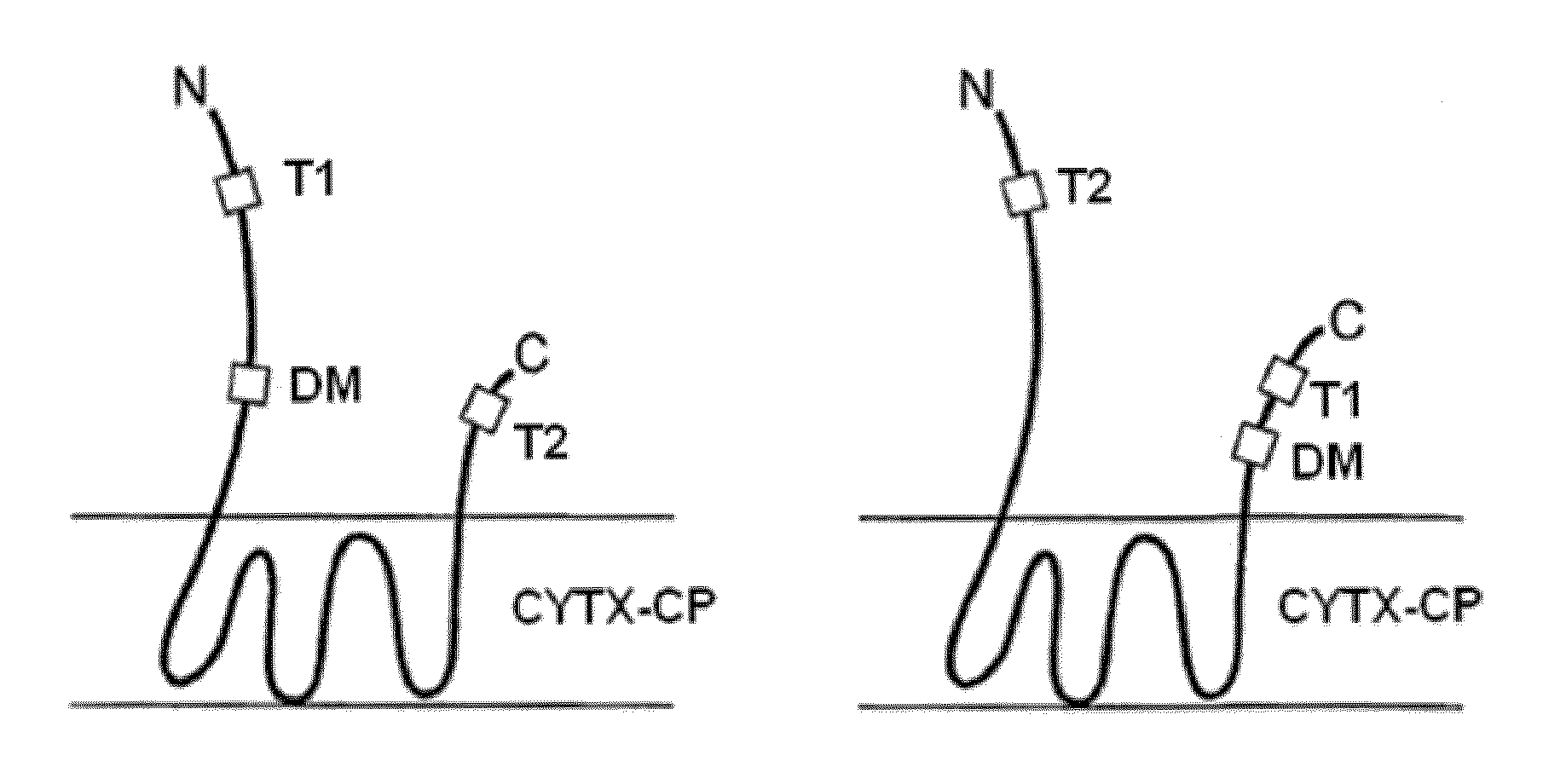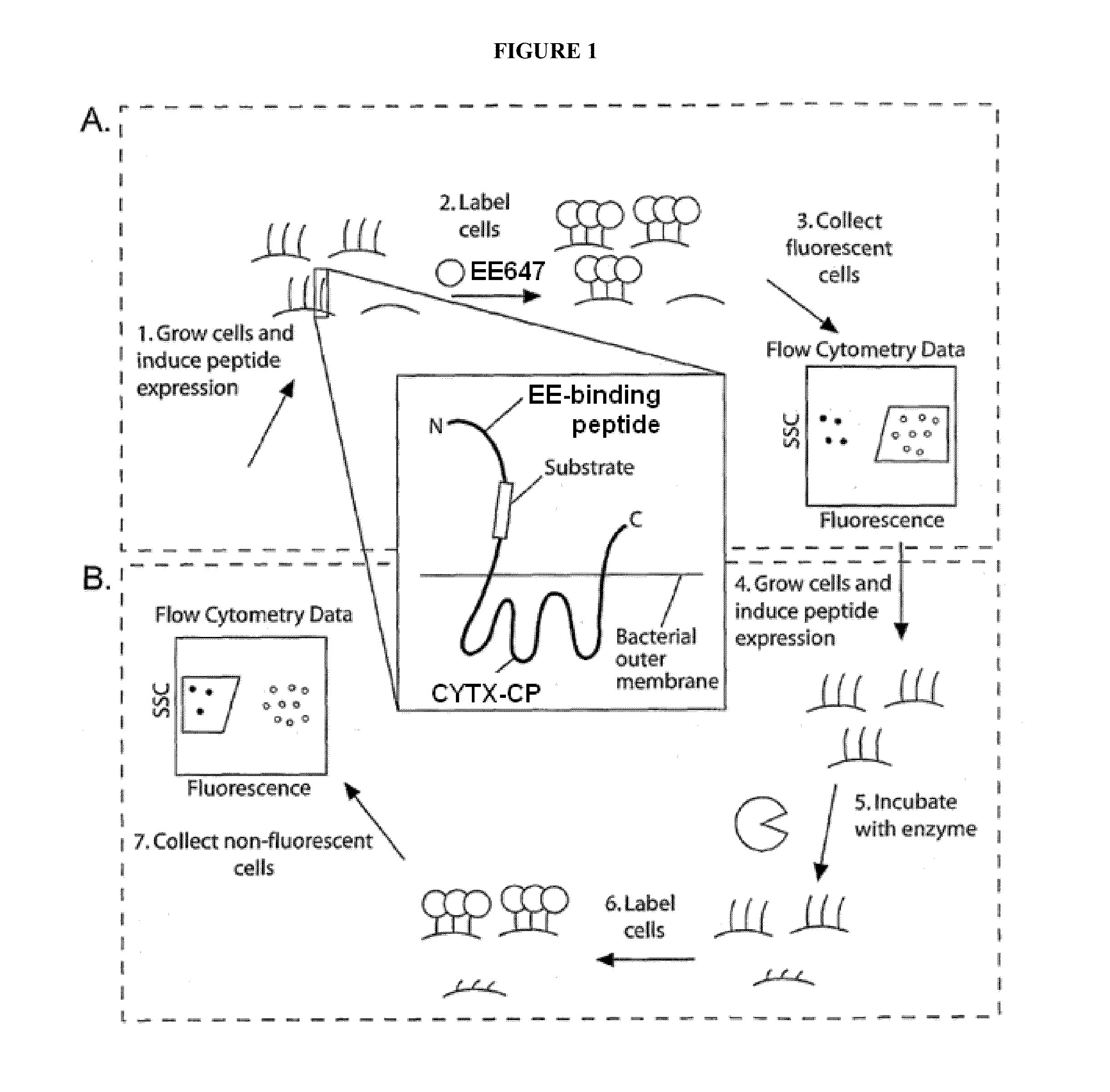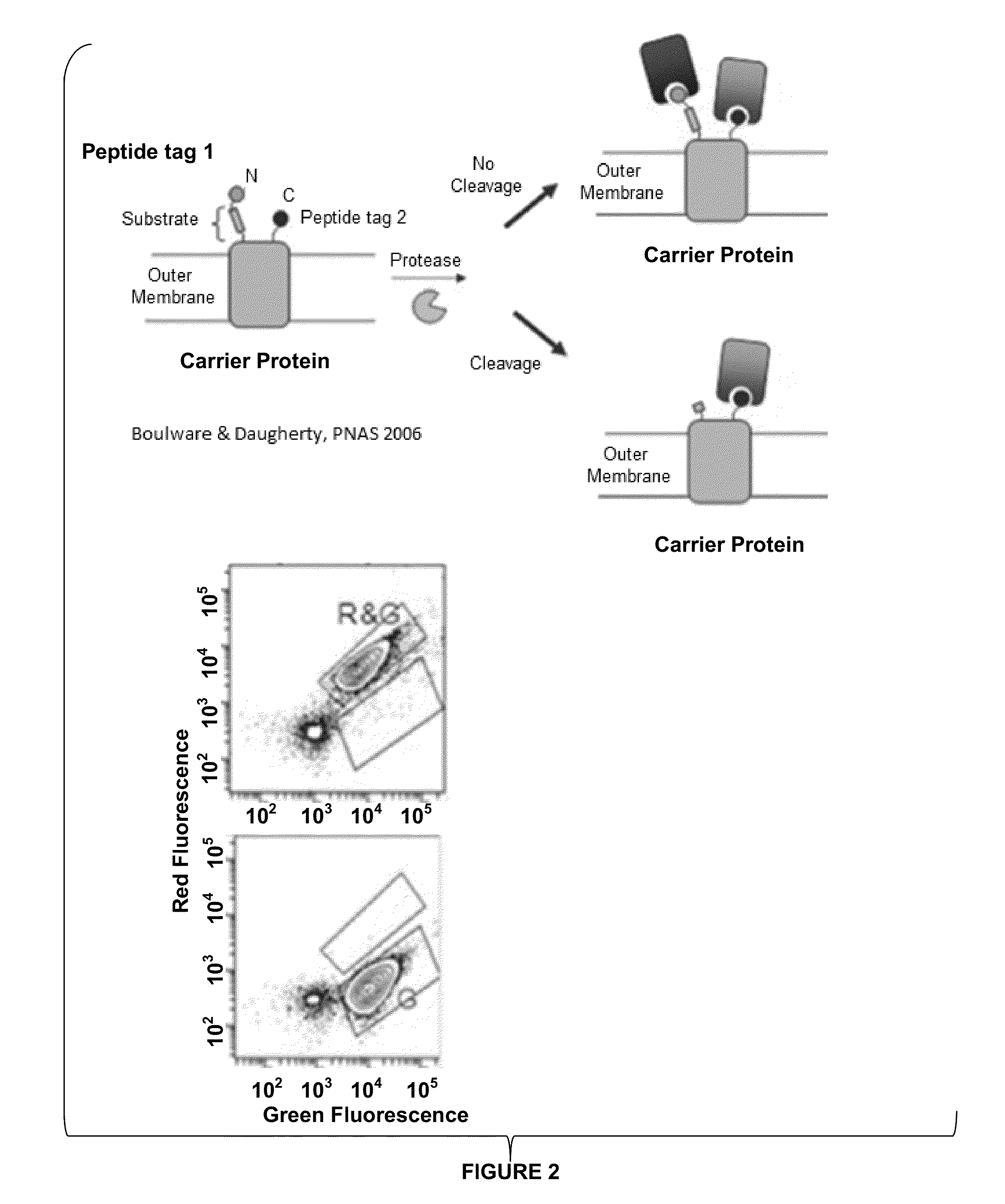Protease-resistant systems for polypeptide display and methods of making and using thereof
a technology of protease-resistant systems and polypeptides, which is applied in the field of bacteria polypeptide display systems, can solve the problems of limiting the usefulness of polypeptide display libraries using host cells, and affecting the use of polypeptide display libraries. , to achieve the effect of enhancing the flexibility of the n- and c-termini linkers and enhancing the display on the system provided herein
- Summary
- Abstract
- Description
- Claims
- Application Information
AI Technical Summary
Benefits of technology
Problems solved by technology
Method used
Image
Examples
example 1
Materials & Methods
[0251]Structural Analysis and Design:
[0252]The structures of all Outer Membrane Protein (Omp) family members that have been determined, including structures of OmpX, were analyzed using PyMol software (Schrodinger, Portland, Oreg. (formerly DeLano Scientific). OmpX structural modifications were developed by visual inspection and by using PyMOL tools and scripts. Molecular biology and engineering of constructs were developed using Vector NTI Suite 11 (Life Technologies, Grand Island, N.Y.).
[0253]Reagents and Strains:
[0254]Oligonucleotides were ordered from Elim Biopharmaceutical (Hayward, Calif.). The vector was modified from pBAD33 including removing and introducing restriction sites (Boulware, K. T. & Daugherty, P. S., (2006) PNAS, 103(20), 7583-7588). Molecular biology reagents including PCR reagents, restriction endonucleases and ligation reagents were from Lucigen (Middleton, Wis.) and New England Biolabs (Ipswich, Mass.). Streptavidin-conjugated phycoerythrin...
example 2
Strategy for Producing a More Protease Resistant Display Platform
[0271]This Example provides the strategy for producing a display platform for peptides that is less susceptible to protease cleavage.
[0272]Since CLiPS (see e.g., PCT Publication No. WO 2005 / 047461; PCT Publication No. WO 2009 / 014726; U.S. Pat. No. 7,256,038; U.S. Pat. No. 7,612,019; U.S. Patent Application Publication No. 2010 / 0113303; PCT Publication No. WO 2007 / 027935; U.S. Pat. No. 7,666,817; U.S. Patent Application Publication No. 20100173349, each of which is hereby incorporated by reference in its entirety) is used to isolate novel protease substrates, it was desirable to create a more robust display platform with improved properties of stability toward target proteases that were known to digest the platform and toward complex mixtures with high protease activity (e.g., synovial fluids). This improved platform, CYTX-DP, allows for more effective protease substrate libraries, mask libraries and, surprisingly, scFv...
example 3
Production of Improved Display Platforms
[0275]This Example describes the production of display platforms from which protease-labile amino acid sequences have been removed. Such display platforms are called CYTX-DP display platforms.
[0276]The plasmid comprising eCLiPS3.0-GSNS, the display platform from which CYTX-DP-GSNS, which includes an EagI restriction site at the C-terminus prior to the histidine tag and is referred to herein as “CYTX-DP-GSNS,” was produced is designated pB33-GSNS1-GGS4-eCLiPS3.0 PHB4901; the amino acid sequence of eCLIPS3.0-GSNS is shown in FIG. 10 (designated N-termTag_stop_CLiPS_GSNS). This is a CLiPS construct with the legumain “GSNS” substrate (SEQ ID NO: 10) and a SA-PE N-terminal tag and a YPET C-terminal tag; this YPET tag is designated BV99 and has amino acid sequence HISQWKPKVPNREDKYKK (SEQ ID NO: 18). After protease-labile regions of eCLiPS3.0-GSNS were identified for mutagenesis, standard molecular biology techniques were used to mutate and truncate ...
PUM
| Property | Measurement | Unit |
|---|---|---|
| concentrations | aaaaa | aaaaa |
| volume | aaaaa | aaaaa |
| diameter size | aaaaa | aaaaa |
Abstract
Description
Claims
Application Information
 Login to View More
Login to View More - R&D
- Intellectual Property
- Life Sciences
- Materials
- Tech Scout
- Unparalleled Data Quality
- Higher Quality Content
- 60% Fewer Hallucinations
Browse by: Latest US Patents, China's latest patents, Technical Efficacy Thesaurus, Application Domain, Technology Topic, Popular Technical Reports.
© 2025 PatSnap. All rights reserved.Legal|Privacy policy|Modern Slavery Act Transparency Statement|Sitemap|About US| Contact US: help@patsnap.com



